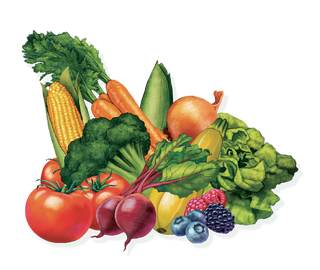Swiss Chard seed is easy to grow, super nutritious, and attractive. Because its stems can be very colorful and its leaves remain vibrant in the summertime, chard is a good choice for edible landscapes as well as the garden. Considered a cool weather crop, chard can be planted in the spring and again in late summer for the fall garden.
Swiss Chard Seeds for Sale by Gurney's
Chard Varieties: Choosing the Right Chard Seeds
When selecting Swiss chard seeds, the two major considerations are flavor and appearance. Bright Lights Chard Seed and Peppermint Chard Seed have very colorful stalks that add wonderful summer color and are favorites for the edible landscape. Swiss Lucullus Chard Seed and Swiss Perpetual Chard Seed offer outstanding flavor and are slower to bolt, making them ideal for Southern gardeners. Many gardeners grow Swiss chard for a summer greens harvest.
Getting Started with Chard Seed
Swiss chard is an easy-to-grow vegetable and is a good summertime substitute for spinach. With these tips, you can grow nutritious and delicious Swiss chard.
When to Plant Chard Seeds
Like other vegetables, chard performs best when planted in well-drained soil and in full sun, or 6-8 hours of direct sunlight daily. Most gardeners plant Swiss chard seeds directly into the garden soil in mid to late spring. Swiss chard seed can also be started indoors and transplanted to the garden.
How to Plant Chard Seeds
When planting Swiss chard seed, follow the instructions on the individual chard seed packets. Most chard seed is planted in rows 24-30 inches apart. The seeds should be planted 1/2 to 3/4 inch deep and about 6 inches apart. Water well.
How to Grow Chard from Seed
Chard doesn't require that much extra care. Just make sure that it receives enough water, or about 1 inch of rainfall weekly. Mulching helps suppress weeds and conserves moisture in the soil.
How to Harvest Chard
Swiss chard leaves can be harvested at the baby leaf or mature stage. Cut the leaves about two inches above the ground. To ensure a longer harvest, harvest the older leaves first and allow the younger leaves to grow.
How to Cook Chard
Low in calories and packed with antioxidants, chard is a nutritious and versatile vegetable. If harvested at the baby leaf stage, the chard leaves can be eaten raw or sautéed. If harvested at a later stage, keep in mind that the stems will take longer to cook. Some people pickle the stems for a tasty, colorful treat. Chard also is good cooked into soups and other recipes.






